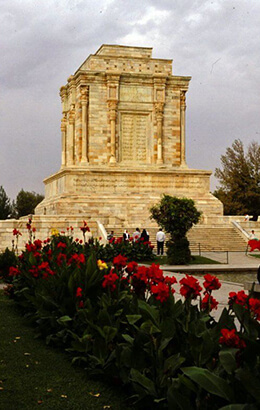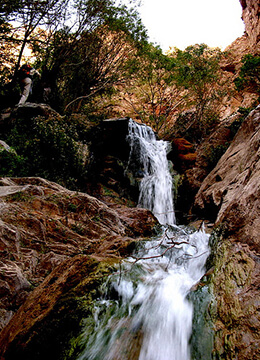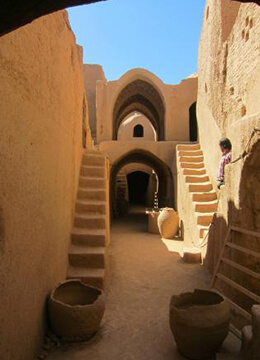Mashhad Is The City Of Imam Reza, Ferdowsi and Khayyam
Mashhad,
Mashhad also spelled as Mashad or Meshad, is the second most populous city in Iran and the capital of Razavi Khorasan Province. It is located in the northeast of the country, near the borders with Turkmenistan and Afghanistan. It has a population of 3,001,184 inhabitants (2016 census), which includes the areas of Mashhad Taman and Torqabeh. It was a major oasis along the ancient Silk Road connecting with Merv to the east.
The city is named after the shrine of Imam Reza (A.S), the eighth Shia Imam. The Imam was buried in a village in Khorasan, which afterwards gained the name Mashhad, meaning the place of martyrdom. Every year, millions of pilgrims visit the Imam Reza’s shrine.
Mashhad is also known colloquially as the city of Ferdowsi after the Iranian great poet who composed the Shahnameh.
The city’s economy is based mainly on selling dry fruits, saltednuts, Saffron, precious stones like agates turquoise, intricately designed silver jewelry studded with rubies and emeralds, eighteen carat gold jewelry, perfumes, religious souvenirs, trench coats, termeh, handmade and industrial carpets and rugs, and productions of leather industry.
Large parks, the tombs of historical celebrities in Tus and Neishabour, the tomb of Nader shah E Afshar and waterparks, along with lots of amazing malls & shopping centers, and beautiful summer resorts such as Torghabe & Shandize are sights of the city.
The Imam Reza’s Shrine Complex dominates the city center and needs several visits to properly appreciate the scope of its magnificence. With seven massive courtyards, and a total area of nearly 600,000 square meters, by some measures it is the largest mosque in the world.
Shrine Complex Museums
There are several museums within the holy shrine include a curious mixture of exhibits, ranging from stamp collections commemorating the storming of the US embassy, to medals won by Shia athletes. The carpet section has some stunning pieces, but the most fascinating item is the previous tomb encasement which was replaced in 2001.
Kuh E Sangi Park
Kuh E Sangi is one of the best parks in Mashhad, a great spot for afternoon or early evening picnicking. A small stream runs through it, which you can cross by climbing the rock formations or hopping across stepping-stones.
Mashhad Bazaar
Bazaar Reza is one of the oldest shopping malls in Mashhad on the east side of Razavi Holy Shrine and is one of the most important shopping malls for pilgrims and tourists. It is designed to look semi traditional, but is a 20th-century creation. Bazaar Reza is built in two separate floors and two corridors with about 1711 business units doing their business. These commercial units show the prominent feature which is the length of this passage. The main feature of Bazaar Reza is that it reaches more than one kilometer in length. A large number of hotels in Mashhad are located around this bazaar.
Tomb of Ferdowsi, Tus
About 40 kilometers outside of Mashhad is the small town of Tus, which is synonymous with the burial site of Iran’s national poet, Ferdowsi. The author of the epic poem, the Shahnameh (the Persian Book of Kings), Ferdowsi died in 1020 A.D, and his remains have rested in Tus ever since. The mausoleum’s current form, a massive stone structure that imitates Achaemenes architecture, was developed in the 1960s, and is the centerpiece of a surrounding park.
Tomb of Omar Khayyam, Neishabour
Iranian mathematician, astronomer, poet, Omar Khayyam (18 May 1048 – 4 December 1131) who was born in Neishabour, in northeastern Iran, and spent most of his life near the court of the Karakhanid and Seljuq rulers in the period of the First Crusade. His quatrains are perhaps the most famous ones around the globe, introduced to the West by Edward Fitzgerald’s 19th-century translation. Khayyam’s present mausoleum is another unique modernist structure, built in 1963, located in Neishabour, just over an hour outside of Mashhad, the town also houses the tomb of Attar, a Persian philosopher-poet.
Qadamgah,
Qadamgah, Imam Ali Ibn Musa Reza’s (A.S.) feet print on a stone, 23 kilometers northeast of Neyshabur, is a regular spot on the itinerary of pilgrims and travelers visiting the holy city of Mashhad. According to the accounts of the journey, Imam Reza (A.S.) stopped at a spring, besides which he performed the prayer. After the prayer, the impression of his feet miraculously appeared on the stone where he stood. Later, the faithfuls built a dome besides the spring and installed the impression of the Imam’s feet in its southern wall. The present building dates from the Safavid period. Millions of pilgrims and travelers visiting the holy shrine of Imam Reza (A.S.) in Mashhad city also visit Qadamgah and drink the water from spring adjoined to the shrine near the impression of the feet of Imam Reza (A.S.)




